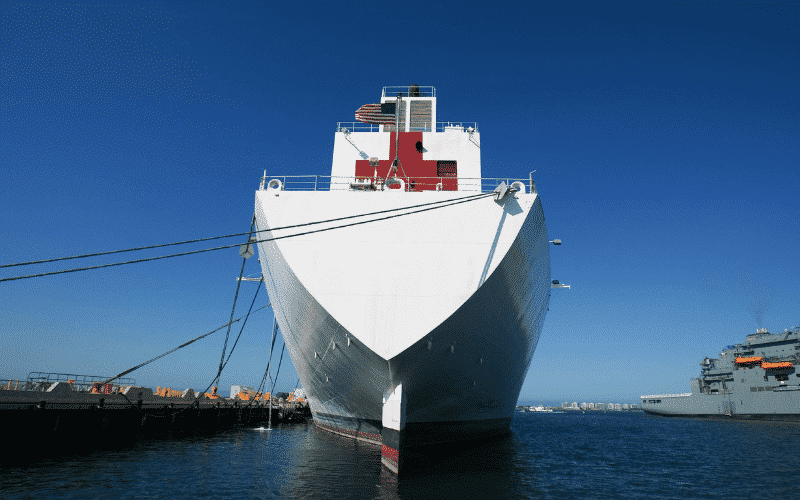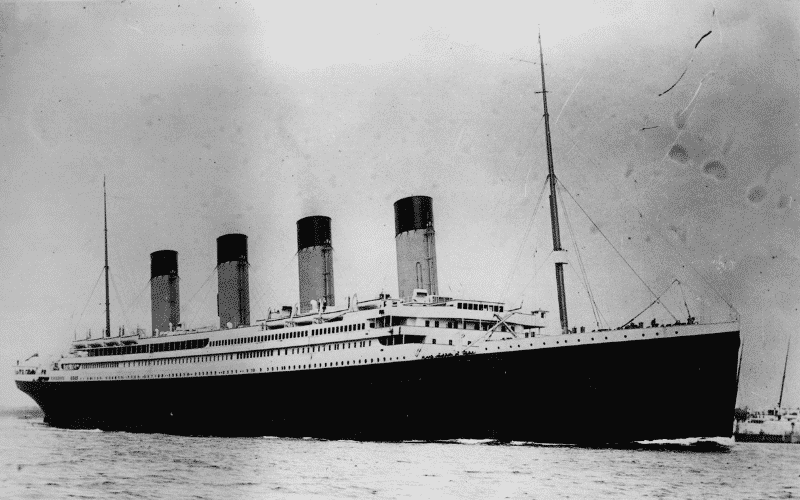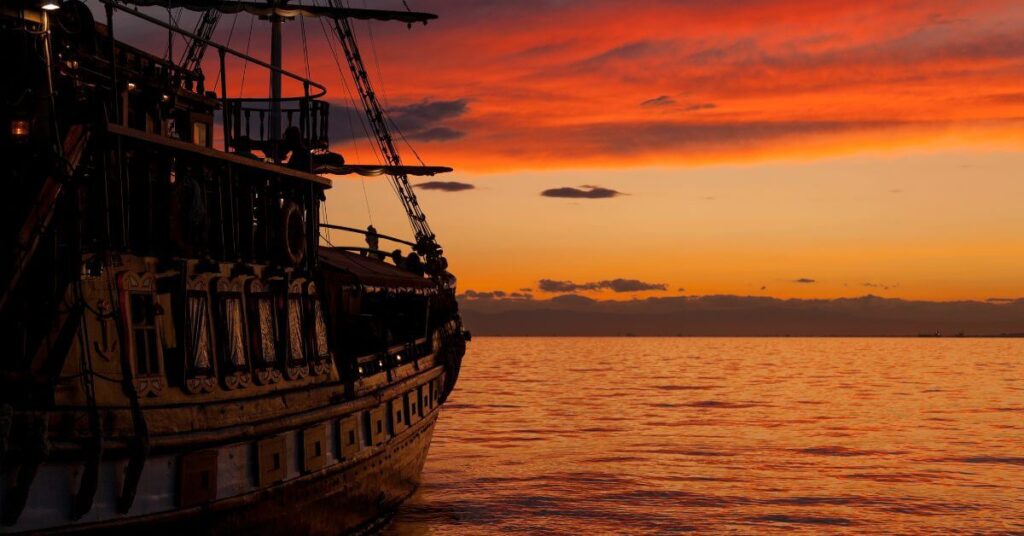World’s First Global Maritime Competition
Maritime Accidents : The Sinking of Britannic Hospital Ship
Everyone knows about the Titanic disaster. But a similar fate was met with the sister ship of the RMS Titanic – the RMS Britannic.
Constructed to be a passenger vessel like her other two sister ships, the Titanic and the Olympic, Britannic was set in motion in the year 1914 at the Harland and Wolff shipyard in Belfast. But the outbreak of World War I prevented the passenger liner to function in her intended role leading to her being altered to a ship hospital.
As a hospital vessel, the Britannic ship was launched on the 15th November 1915 under the captaincy of Captain Charles Bartlett. Her titular name was also changed from RMS Britannic to HMHS (His Majesty’s Hospital Ship) Britannic.

The ship’s conversion from a passenger vessel to a hospital ship involved a lot of changes and modifications to the interior of the ship.
Beds, medical equipment and other requirements were added to the ship in lieu of the original baubles while medical officers and nurses became the ship’s leading crew.
In order to ensure that the ship was recognised by all countries as a hospital ship, the ship was painted white with a horizontally placed green banding with three big medical crosses, acting as its insignia.
Also, two additional medical crosses were hung on the deck of the ship, which was illuminated by light. This ensured that the men-at-war in the sea could recognise the ship even at night.
The ship hospital had 58 lifeboats and in all made eight journeys to ferry the war casualties. When compared to the Titanic, the RMS Britannic was almost 200 tons heavier. This was mainly because the construction of the Britannic was carried out specifically keeping in mind the Titanic sinking which happened when the ship was being fitted.
Some of the safety measures incorporated in the hospital ship included a double-walled protection for the hull and more number of davit-cranes with an increased capacity to hold more lifeboats. The amount of lifeboats that the HMHS Britannic carried was three times the number carried by the Titanic.
Sinking of The Britannic
The hospital vessel after its duties to its native country was once again re-modified to be launched as a passenger vessel, as originally intended in the year 1916. However, again as before, complications and events arose which forced the ship to be reverted back to being the hospital vessel.
In the month of November, only a few months after the ship rejoined the naval medicinal fleet, an unprecedented incident occurred, putting an end to the ship as a member in the active line of duty.
Though it has been widely speculated that a mine explosion caused the ship to explode, there are other surrounding theories about a torpedo blasting the ship. But irrespective of the actual cause, the damage to the ship was irrevocable and irreversible.
On the fatal day, at about 08.12 am, on the 21st of November, an explosion was felt on the stern-side of the vessel. And while the reaction of the captain, the doctors, nurses and the other officers of the ship was immediate, those who manned the astern-side of the vessel were slower to react.
The impact of the explosion was immediately felt in the boiler rooms and the firemen’s cabins where water started to seep in. However, even as the captain ordered the boiler rooms’ doors – which were watertight – to be shut two of the doors were not able to be shut.
This led to even more seepage of the water into the ship. But considering that the ship was designed to remain above water even if six of its watertight rooms were filled with water, the portholes being open in the decks located further below led to a faster increase in the seepage of water into the ship –15 minutes from the time of the explosion.
The captain’s decision to hold on the lowering of the lifeboats and make for the Greek Kea Island which was at a distance of three miles caused further delay in the lowering of lifeboats. But the veering of the ship to its starboard side and because of the rudder, the ship’s engines were stopped and the captain finally gave orders for the lifeboats to be lowered.
However, a couple of lifeboats that were lowered, even before the captain could issue his orders were lowered onto the portside where the propellers were located. The propellers were in motion and the lifeboats along with the evacuated crew were torn brutally by the propeller blades.
Rescue ships like the HMS Scourge and the HMS Heroic picked up the rescued passengers afloat in the 35 lifeboats. These rescued people were taken to the Island of Kea for further treatment. Fortunately, the ship at the time of the incident did not have any war patients and the number of the dead was quite minimal. 30 people in totality died, while 1,036 members were saved in the catastrophe that lasted for just 55 minutes.
The Britannic ship was used for a noble cause. And knowing the ship’s line of action, the people on the Greek island took all efforts to ensure that medical facilities were offered to the injured. Funerals for those who died were arranged and attended by everyone as a mark of sympathy and respect highlighting the humanity in the light of a war of epic proportions.
You may also like to read-10 Famous Shipwrecks in the World
Disclaimer :
The information on this website is for general purposes only. While efforts are made to ensure accuracy, we make no warranties of any kind regarding completeness, reliability, or suitability. Any reliance you place on such information is at your own risk. We are not liable for any loss or damage arising from the use of this website.
Disclaimer :
The information on this website is for general purposes only. While efforts are made to ensure accuracy, we make no warranties of any kind regarding completeness, reliability, or suitability. Any reliance you place on such information is at your own risk. We are not liable for any loss or damage arising from the use of this website.
Related Articles
⚓️ Enhance Your Knowledge. Prevent Accidents. Stay Safe at Sea.
1. eBooks for Engine Department
Master machinery operations, troubleshooting, and safety procedures with expertly written guides tailored for marine engineers. Prevent costly breakdowns and onboard accidents through practical knowledge.
👉 Explore Engine Department eBooks
2. eBooks for Deck Department
Sharpen your seamanship, navigation, and cargo-handling skills with real-world case studies and practical insights designed for deck officers and cadets.
👉Discover Deck Department eBooks
3. eBooks on Electrical Fundamentals & Issues
Understand marine electrical systems, identify potential faults, and prevent onboard electrical failures with step-by-step explanations from industry experts.
4. Pocket Guides for Quick Reference
Compact, handy, and loaded with essential checklists—perfect for on-the-go reference during operations and emergencies at sea.
5. Combo Packs to Save Big
Access multiple expert eBooks at discounted prices. Ideal for professionals seeking complete safety and operational knowledge across various ship departments.
6. Digital Maritime Courses – Learn at Your Own Pace
Upgrade your competence with Marine Insight Academy’s online courses. Learn from industry professionals anytime, anywhere, and become a safer, smarter seafarer.
Subscribe To Our Daily Newsletter
By subscribing, you agree to our Privacy Policy and may receive occasional deal communications; you can unsubscribe anytime.






What part of brittanic exploded?